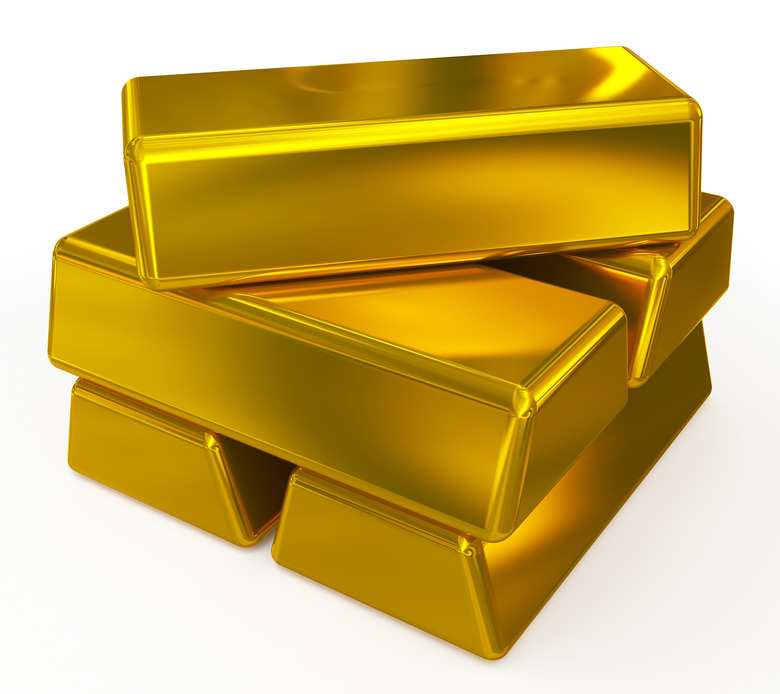How To Purify Gold
The value of gold depends in part on its purity. There are several useful methods to purify gold, including the Wohlwill process, the Miller process, cupellation and acid treatment.
The Wohlwill Process
The Wohlwill Process
In 1874, Dr. Emil Wohlwill of the Norddeutsche Affinerie in Hamburg, Germany, developed a method to purify gold through electrolysis. The unpurified gold ore is fashioned into a 100-ounce anode, whereas pure gold strips make up the cathode. The electrolyte solution is a mix of gold chloride and hydrochloric acid. When an electric current passes from the anode to the cathode through the electrolyte, the gold at the anode dissolves and collects at the cathode. The refinery melts the cathode and casts it into bars of at least 99.5 percent purity.
The Miller Process
The Miller Process
Dr. F. B. Miller of the Sidney Mint created a process to purify gold using chlorine, which forms chlorides with silver and other ore impurities but leaves gold unaffected. The refiner places the ore in clay pots, heats the vessels in a furnace and pumps chlorine gas into each pot. After cooking for a few hours, the refiner retrieves the pots and skims off the molten chlorides, leaving behind gold with a purity of 99.6 to 99.7 percent. The Miller process replaced the Wohlwill process for most of the industrial refining of gold ore.
Cupellation Method
Cupellation Method
The cupellation method is appropriate for separating gold from small amounts of ore. The refiner grinds the ore into a fine powder and mixes it with lead oxide, a flux made of sand or borax, and an organic reducing agent such as graphite or flour. When the mix is heated in a crucible, the lead oxide reduces to lead, into which the gold dissolves to form a heavy molten phase. The refiner drains the phase from the bottom of the first crucible and places it into a second, porous one. When heated, the lead melts, oxidizes and sinks into the crucible walls, leaving behind gold and other noble metals such as silver and platinum. Other methods, such as solvent extraction with butyl diglyme, then separate and purify the gold.
Acid Treatment
Acid Treatment
The acid mixture aqua regia, or royal water, dissolves gold and is used to purify scrap alloy containing gold. Aqua regia is a mix of three parts hydrochloric acid to one part nitric acid. The dissolved scrap gold forms gold chloride. The chlorides of silver and platinum may also be present. The refiner filters away the undissolved material and then separates the dissolved gold from the other dissolved precious metals using butyl diglyme. This clear, odorless liquid can hold dissolved gold chloride but rejects the other noble metals. The butyl diglyme sits atop the aqua regia, much like vinegar separates from oil, and can be skimmed away to yield gold of 99.9 percent purity.
Cite This Article
MLA
Finance, Eric Bank, MBA, MS. "How To Purify Gold" sciencing.com, https://www.sciencing.com/purify-gold-4473029/. 24 April 2017.
APA
Finance, Eric Bank, MBA, MS. (2017, April 24). How To Purify Gold. sciencing.com. Retrieved from https://www.sciencing.com/purify-gold-4473029/
Chicago
Finance, Eric Bank, MBA, MS. How To Purify Gold last modified March 24, 2022. https://www.sciencing.com/purify-gold-4473029/
